The Ministry of Defence has confirmed that test flights of new uncrewed systems in Australia and the United States are being closely followed by the UK, though procurement choices remain tied to its own Strategic Defence Review and investment plan.
Conservative MP Ben Obese-Jecty tabled three written questions on 19 September asking about the implications of allied programmes: the Royal Australian Air Force’s Boeing MQ-28 Ghost Bat, the US Navy’s MQ-25 Stingray refuelling drone, and General Atomics’ YFQ-42.
Responding, Defence Minister Luke Pollard did not provide assessments of individual platforms but instead pointed back to the government’s long-term transformation agenda. He said the Strategic Defence Review (SDR) had “set out the pathway for the next decade and beyond to transform Defence,” with a particular emphasis on lessons from Ukraine. According to Pollard, those lessons underscored the need to “harness drones, data, and digital warfare to make our Armed Forces stronger and safer.”
The SDR identifies uncrewed systems as an immediate priority for the RAF, recommending a broad mix of capabilities rather than reliance on a single platform. Pollard highlighted a £2 billion investment into autonomy during this Parliament and confirmed the creation of a new Defence Uncrewed Systems Centre, due to reach initial operating capability by February 2026.
He stressed that the detail of future acquisitions is not yet finalised: “The exact types of uncrewed systems to be procured and the associated investment will be determined as part of the Defence Investment Plan.”
Whether asked about Australia’s Ghost Bat, the US Stingray tanker drone, or General Atomics’ YFQ-42, the minister avoided singling out foreign systems as direct models for UK procurement. Instead, he framed them as part of a wider context in which allies are also investing in autonomy, while Britain works to develop its own integrated approach.


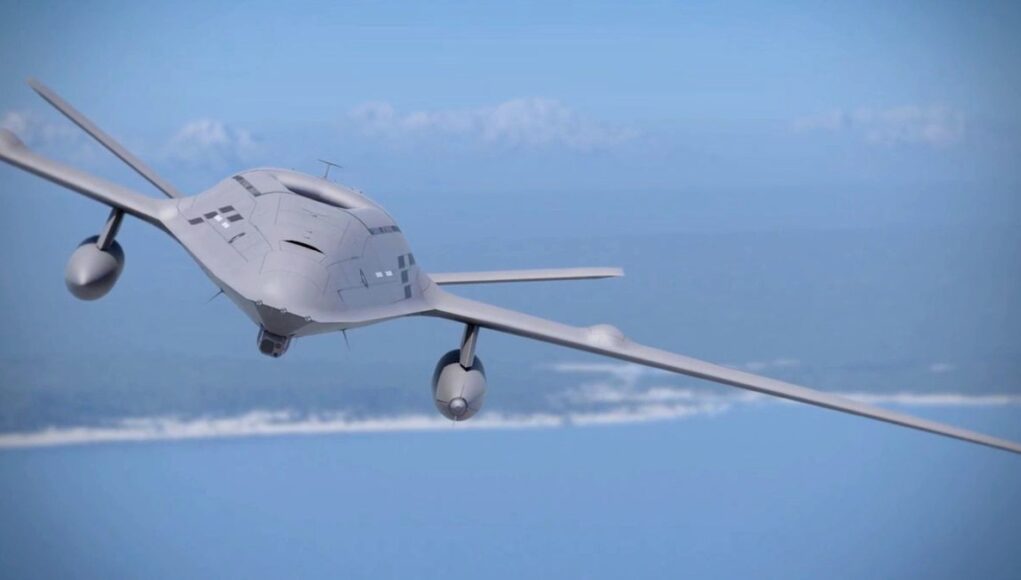
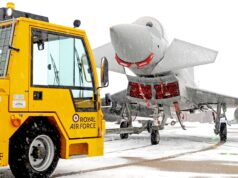
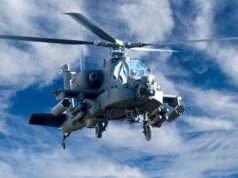
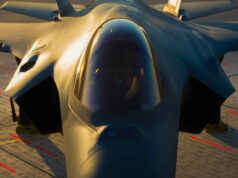


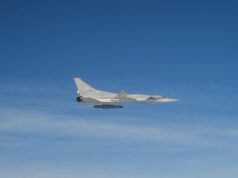

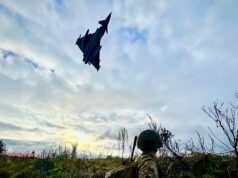
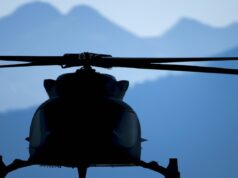

Looking looking looking….
AA
So we don’t have enough money to maintain our current manned platforms and certainly no money to buy anything new but we can splash the cash on countless unproven autonomous project research programs ?
Have these AV’s, Drones and AI tech developments actually won a war ?
Answers on a postcard (because it’s less likely to get lost or become a victim of Cyber crime) to Harry Halfwit c/o Halfwit House, Gormless UK.
I understand your caution (or is this simply devil’s advocating) but nothing wins a war until there is a war there for it to win. Monoplanes hadn’t won a war when they took over from biplanes who many were still claiming were a better bet a few years before WW2, one less than famous quote being ‘monoplanes may start this war but biplanes will finish it’. The tank never won a war prior to WW2 (despite the hype about its WW1 appearance), jets never won WW2 but should they thus have been rejected, Griffith the father of viable jet propulsion nearly destroyed Whittles project claiming only net props were viable. After all, piston engined planes that never got into service would have outperformed early jets, no new Piston engined fighters were officially supported after early 1942, some of which would have approached supersonic speed. Again ballistic missiles didn’t win the war for Germany nor cruise missiles, they were arguably, like German jets a waste of resources. But in the end it’s about timing and judgement with what evidence is available or you wouldn’t have the new generation weapons to even test and judge in a war. Too late if you delay till others prove their success surely. So you have to make calculated decisions and hope you get it right, but sensibly build up commitment as success gains evidence. That’s what happened in Uk jet production in the end, unlike the Germans the axial flow jet engine stayed away from frontline aircraft by design till the post war period when further developed they would become powerful and reliable. Great decision based on nothing to do about war winning other than not needing them to win the then current war.
There’s absolutely no way a WW2 era propeller driven plane would have reached high transonic speeds in level flight, i.e. speeds from Mach 0.75 or 575mph. You can chuck as much horse power as you want at it, but the propeller itself will start slowing the aircraft down. The propeller has to be capable of accelerating the aircraft from zero mph to a high cruise speed say 400mph, but if its a fighter aircraft, it also has to accelerate quickly to that speed. Meaning the prop, has to create thrust from a standing start and keep it going until it reaches its cruise speed. But the blade shape can’t be too thick, as this causes to much drag. So you use a thinish blade profile but give it variable pitch (you can vary the blades angle of attack).
As the aircraft goes faster, the air over the propeller will also be going faster and as lift or in this case thrust is proportional to the local airspeed. Having the blade pitch with too much angle of attack, is wasted energy as you can cause the air to separate over the leading edge of the blade, the same as a wing. But as the blade tips are rotating faster than nearer the hub, the local airspeed at the tips will be much faster. As you get into the transonic region, shockwaves will start to be generated, which causes the air to separate from the blade’s surface, losing lift (thrust) but creating drag and lots of it. The faster you go the shockwaves will start getting stronger and start travelling down the blade causing more separation. Additionally the blade tip will start oscillating in resonance to the shock waves. At some point the blade will reach it s fatigue limit and suffer a unplanned structural deconstruction.
You can extend the speed of the blade and delay the onset of issues with compressibility (shockwaves etc), by making the blade much thinner and stiffer. However, this reduces the efficiency of the blade at slower airspeeds. But also as the blades can now go supersonic, the shockwaves combine to generate a continuous sonic boom. A good example of this is the Republic XF84H Thunderscreech. Which used 5,850 hp to drive a three bladed propeller, but could only manage 520 mph (Mach 0.68). But then Rare Bear manage to get to 528mph (Mach 0.69) on 4600hp.
Saying all that, there may be a possible answer, to get a propeller plane closer to supersonic speeds in level flight, which is through engine compounding. Before and during WW2 there were various designs that used the aircraft’s engine to drive a compressor (the motorjet), such a the Mig-13. Where fuel was added to the compressed air to give a boost in thrust and speed. But the engine was still driving the propeller, so you’d still have the compressibility problems. Another method did away with the propellor and just used the engine to drive a compressor as per the Italian Caproni Campini N1. However, this had major intake restrictions as the two 6 bladed compressors, didn’t have sufficient jump in pressure ratios between the compressors to work efficiently.
Rolls Royce had similar ideas with a Griffin powered compressor. But it was the Crecy engine that showed more promise. As the engine was a 2 stroke rather a 4 stroke. The exhaust gases exited with a lot of thrust, providing some additional 350lbs of thrust, equivalent to an extra 700hp. This was on top of the 2500hp the engine was quoted with producing. A theoretical development saw the Crecy mated with a Metrovick F2 compressor (as designed by Griffith – This compressor design was later used by RR on the Avon engine). Calculations showed that the engine should be able to produce about 1000lbs of thrust, slightly more than the Whittle W1 centrifugal engine.
However the propeller would still need dealing with. You can feather the blades by angling the blades so that don’t generate lift (thrust). However, they will still create significant amounts of drag, as well as being shockwave generators. The other method would be to declutch the propeller and then fold the blades back towards the airframe (as used by a number of powered gliders), which will then generate a lot less drag. Then rely on the thrust generated by the compressor to push the aircraft faster.
Using a combination of the propellor for lower speeds and take-off will be highly advantageous over an early powered by a jet engine. As it will make the aircraft faster to accelerate. As the speed approaches 450mph, the combined propeller thrust and the additional “jet” thrust, should allow the aircraft to reach 500mph in level flight. Where the propeller is then declutched and the blades folded back. Allowing the jet thrust to continue pushing the aircraft. However, I don’t think it would have passed 550mph. Even though the Metrovik F2 compressor was very efficient, the Crecy would be at its limit. You really need either a much more powerful engine to spin the compressor faster. Or as shown by Metrovik and then RR, drive the compressor by a turbine, which by 1943 developed 2000lbs of thrust and by the end of the war was approaching 4000lbs of thrust. Perhaps like the Meteor it would have gone past 600mph. It’s so much simple using a jet engine!
Yet something very similar is back.
Have you seen the Bell folding propellors/rotors for their experimental jet/tiltrotor. It has three phases: rotors for V/STOL, tilted rotors for propellors and folded propellors to let the engines function as jets. I remeber seeing the video of the ground rail engine tests a couple of years ago, but it looks like it’s moving forward with a demonstrator planned for 2027. No idea if they’ll get it off the ground, but it seems that DARPA are supporting it as an X-plane under SPRINT, so there’s a good chance.
Although the target speed for the demonstrator is advertised as 450kt, I reckon there’s a good chance we’ll know if this next gen will go past 600mph before the decade is out.
Even more similar is the CFM RISE programme for an open-rotor/ propfan/ openfan/ engine. Though this is more for efficiency than speed.
Bell are one of those US companies that plods along quietly in the background. Yet normally produces the goods. So yes definitely worth watching.
Is the GA one the Ghost at lookalike, or something different?
Stingray is a good shout, but only once the QEs have at least STOBAR, it’s pointless if it can only deploy from land. It’d be a waste of money if the MOD did anything other than watch that.
Ghost bat is cool, and seemingly a higher end and more capable version of what we seem to be trying to do with the Tekever AR3. Remains to be seen if the Aussies have the cash to field them in significant numbers alongside manned platforms- although I expect that level of performance will be the norm once the kinks have been ironed out.
The problem is that MQ-25 Stingray has an utterly mad unit cost – estimated at $160m each! That’s because it has huge overall costs, yet the current USN plan is to buy just 76 of them! Obviously if they massively ramped up orders, the unit cost would fall, but that’s not very likely for now. It’s really only if they dramatically expanded the mission set (beyond the Boeing proposal to carry a pair of LRASMs) that it would be worthwhile. At those unit costs, you’d be almost as cheap buying V-22 Ospreys (not that I’d recommend that).
I think when people bemoan the ‘loss’ of Taranis these facts do need to be taken into account. Not sure about the present status of the Stingray but initial expectations and plans for its capabilities and role was really quite limited, to the point that Northrop Grumman which were arguably the most advanced in their drone ai capabilities pretty much threw their toys out of the pram over official hesitance and preference for tip toeing into this new World and thus as they saw it selection of the less cutting edge Stingray. The powers that be were at that time still to be convinced about such autonomous platforms beyond more limited support activities much beyond tankers. Things are changing fast true but still the costs of theses systems and upping their capabilities for serious strike and interdiction mean numbers are still going to be restrained even for the US for a good while I suspect. GhostBat like craft are likely to be more the norm in the early generations over the sort of deeply complex and capable autonomous platform that Northrop Grumman originally envisaged.
Of course the big debate will no doubt become over time if these less capable platforms gain traction and deemed successful will there be greater pressure to move on to those more capable and complex systems or will the exorbitant cost of so doing lead to the argument that the present systems with ongoing but marginal improvements deemed good enough in light of likely existing in greater numbers. Bit like the drone/cruise missile argument now.
$160M?! I didn’t realise that… You’re right, they’d need to be doing a lot more than tanking.
I suppose they would probably be more suited to AEW/AWACS role than Protector/Sea Guardian in some ways, due to the greater take off weight, but I don’t know the range and endurance difference between them. A less capable radar that can stay aloft for 24 hours instead of (for example) 8 hours, especially when you factor in the unit cost of a Stingray, may be an acceptable price to pay (I imagine HMT will think so).
Stingray would likely make a very good signals node though, due to its L/O design. Stealth isn’t hugely helpful for AWACS because you’re blasting out EM spectrum anyway, but if you’re receiving wideband but sending back on narrow lines between specific platforms, some L/O shaping might be more helpful than Protector.
Either way, as you say, Stingray will have to do an awful lot to justify its current price tag…
The Stingray is one of the few UAVs large enough to carry the newer Erieye ER S-band AESA radar. Whether the single AE3007N can power it is another question. There has been some speculation on the duration of Stingray, where some are quoting over 14 hours and some 16. However, they are not saying if this is on the Stingray’s own fuel, or includes the fuel normally used for the tanking role. However, if the aircraft can stay aloft for over 12 hours and cruise around at 35,000ft. The radar horizon is about 230 nautical miles (425km). Which would allow the Stingray to spot very low flying threats much earlier, than say a Crowsnest equipped Merlin.
Fair points, and if it gets a decent comms node into the bargain, it’ll be really capable. How much more capable than Protector is the real question, and whether a single type for refuelling and AEW on the carriers is worth £160M/unit is the question…
Let’s put it this way, if Protector does carry a S-band radar rather than an X-band. It should have a longer detection range. However, the images of the MQ9 Protector released so far, it is fitted with a pair of antenna arrays in two pods, where each array looks left and right. However, based on the MQ9’s size, the arrays look a little small.
The Erieye mounts an S-band array in long dorsal fairing, but the array shape is a compromise. The array’s transmitter-receiver modules (TRMs) are arranged along a rectangle that is significantly longer, than it is in height. Having it this shape will make the generated beam more of a beaver tail in shape, rather than a searchlight. As there’s less TRMs in the azimuth plane to compress the beam.
Comparing the two, Erieye should have the longer detection range due to the larger surface area of the array. The new ER version has a published detection range of over 400km (250 miles). Saab like most (all) manufacturers, don’t publish what the target was or its radar cross section. The MQ9’s S-band radar wont see this far, possibly closer to 300km. Which is still better than the Searchwater radar used by Crowsnest.
The problem comes, if the MQ9 carries a X-band radar. These generally have a detection range advertised as 200 miles (320km). However, this won’t be something like a cruise missile, but more the size of a Tu95, i.e. a barn door. A carrier based AEW platform must be able to detect a threat as far away as possible. Meaning it must have the ability to cruise at a height of 30,000ft or more, as this gives a radar horizon of 394km (245 miles). But crucially with a S, L or UHF radar. It will be able to detect an aircraft before it can get into a very long range air to air weapon’s launch position. If using an X-band an aircraft such as a Chinese J20, will be able launch a PL17 and not be detected. Meaning the AEW platform won’t be able to detect the missile until it is relatively close (perhaps 150km or less). Whereas, if using Erieye, it will be able to detect the launch aircraft and be able to task the combat air patrol (CAP) to intervene. As there is more time to vector the CAP, which is crucially important for the AEW platform. By having the CAP intervene, the launch aircraft (J20) will have to think about evading, otherwise it will be targeted. By evading it won’t be able to give mid-course updates, as the comm’s from the data-link will be broken. The missile will have a passive mode, to search for the AEW’s radar. But the platform can change transmission modes to confuse it, or turn off for a few seconds, letting the platform relocate to a new position, which may be outside the search basket of the missile.
If Boeing will be charging $160M for a Stingray. The cost will have to be balanced against the performance advantage it would have using an Erieye radar over platforms using smaller antenna arrays or higher frequency radar. For example you would need about 3 MQ9s using X-band radar or 2 of the Saab smaller s-band radar, to provide the same coverage as 1 Erieye equipped platform. Bearing in mind the radars of the MQ9 platform won’t be able to detect a platform launching a very long range missile like the PL17 or R37M.
For the QEs to operate Stingray (MQ-25), they will need the full CATOBAR fit. The engine on the Stingray hasn’t the power for a ramp assisted short take off. To get a fully fuelled up Stingray off the deck it will need to be assisted by a catapult. The aircraft’s weight has not been officially published by Boeing. But some reports say it has a max take-off weight of 44,500lbs (including a full fuel load). The RR AE3007N produces around 10,000lbs of thrust. Giving a power to weight of 0.22, which is pretty weedy. For example, the Mig-29K as used by Russia and India for STOBAR, has at a max take off weight a power to weight ratio of 0.73
No option for RATO on Stingray..?! That’d be pretty cool to bring back to carrier ops.
I think I got to about the same place when I last went looking for weights on the Stingray- roughly 50-60% of the weight of a fully loaded Super Hornet. I didn’t look into the engine thrust piece, but that’s helpful to know. What I did find out last time, was that weight class does put it in the operational envelope of the CATOBAR system that the RN put out for industry engagement a few years ago. So it’s at least on their list for consideration- or at least it was.
Would be pretty cool to watch a RATO launch, though I wonder what the cost is compared to EMALs.
I have a sneaky suspicion that the MoD wrote the RFI with the Stingray in mind.
Agreed, the weight ratings are so close I could imagine them writing the requirement with Boeing’s brochure in their other hand.
Good question on cost. If EMALS had been fitted from the start, it’d probably work out cheaper over the life of the ship. But, with the cost of a retrofit factored in, I wonder if RATO wouldn’t still work out cheaper. Harder on the platforms though, and higher risk.
No one wants to do repeated RATOs just to get the plane off the deck
I know, it was mostly tongue in cheek to be honest. But would be pretty cool to watch.
If I recall, RATO was originally seen as a ‘day-to-day’ solution for launching larger aircraft. But risk appetite was a very different thing back then, and even they may have hesitated about launching an aircraft full of AvGas or refuelling ops with a RATO kit!
So far approx $1 billion has been committed to program development, Block 1 production (10 airframes primarily for development purposes) and Block 2 LRIP production commenced with an initial 3 airframes.
The next stage of the flight testing program will include and air-to-air missile test in late 2025 or early 2026. IOC is expected to be declared following the validation of the missile test most likely in 2026.
A factory is being built at Wellcamp near Toowoomba at a cost of $550 million for full scale production of Ghost Bat planned to be up and running in late 2026 or more likely early 2027.
The ADF sees autonomous systems as a force multiplier for a smaller armed force and a way of quickly adding scale. While the final numbers and funding for Ghost Bats have not been made public, it will most likely be of the scale of the recent $1.7 billion for the Ghost Shark XLAUV to acquire them in operationally significant numbers for the RAN.
It’s happening.
I notice also that Stingray is now to get some of Ghost Bat’s systems in a deal between Boeing US & BAE. If the QE class gets the lightweight UAV CATOBAR system then a Stingray / maritime Ghost Bat (remember the Ghost Bat with landing hook illustration from Boeing) combo may be very interesting. Stingray gets you a tanker, possible AShM missile launcher & possible long range radar platform & Ghost Bat a lightweight fighter with internal AAM to support it & fly CAP, with expensive to fly high maintenance F35B reserved for the hard stuff.
Any idea when the defense investment plan comes out?
It seems like it will be the make or break document surrounding whether this government is serious about defence.
Gotta love these pathways, let’s hope they don’t result in a dodgy Irish navi bodging them up, disappearing cash in hand while we watch those very pathways failing at the first signs of frost.
Feels like a case of watching two successful foreign programmes (though not yet final products), but not wanting to buy anything unless it’s built in the U.K. due to Labour seeing Defence as a means of economic/ industrial growth.
Don’t kid yourselves, this government is actively looking at reducing spending all in the guise of legacy platforms.
It looks increasingly likely the target of 2.5% will be missed and as for the target of 5%, that as not even been costed quite how the MOD is in an overspend of 2 billion for the fiscal year is beyond me.